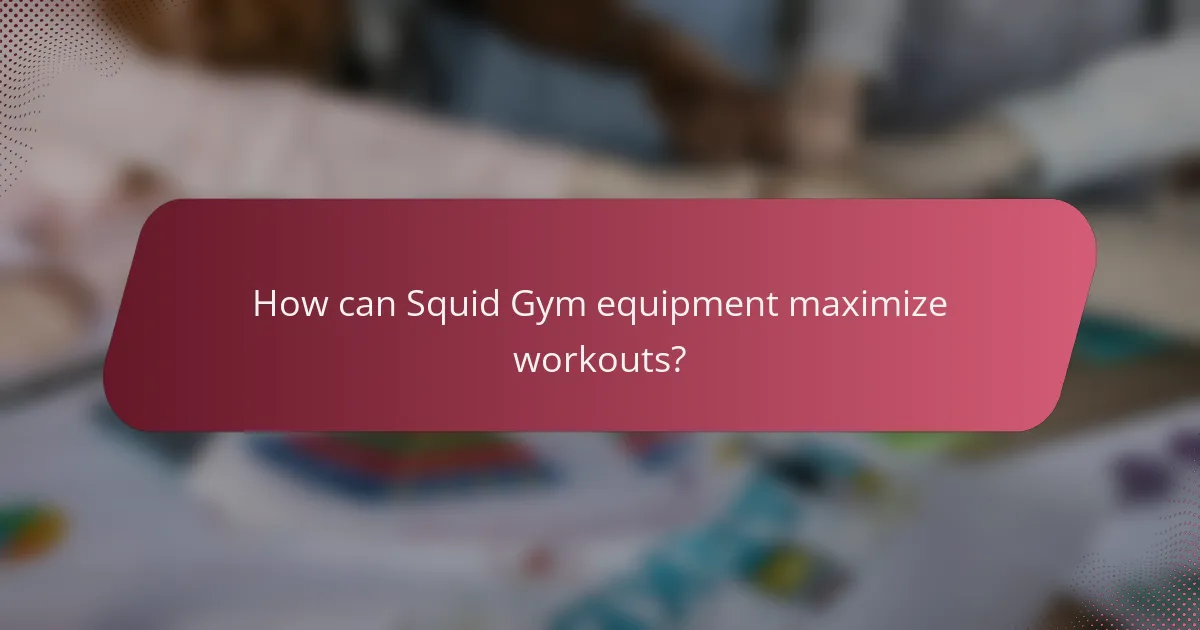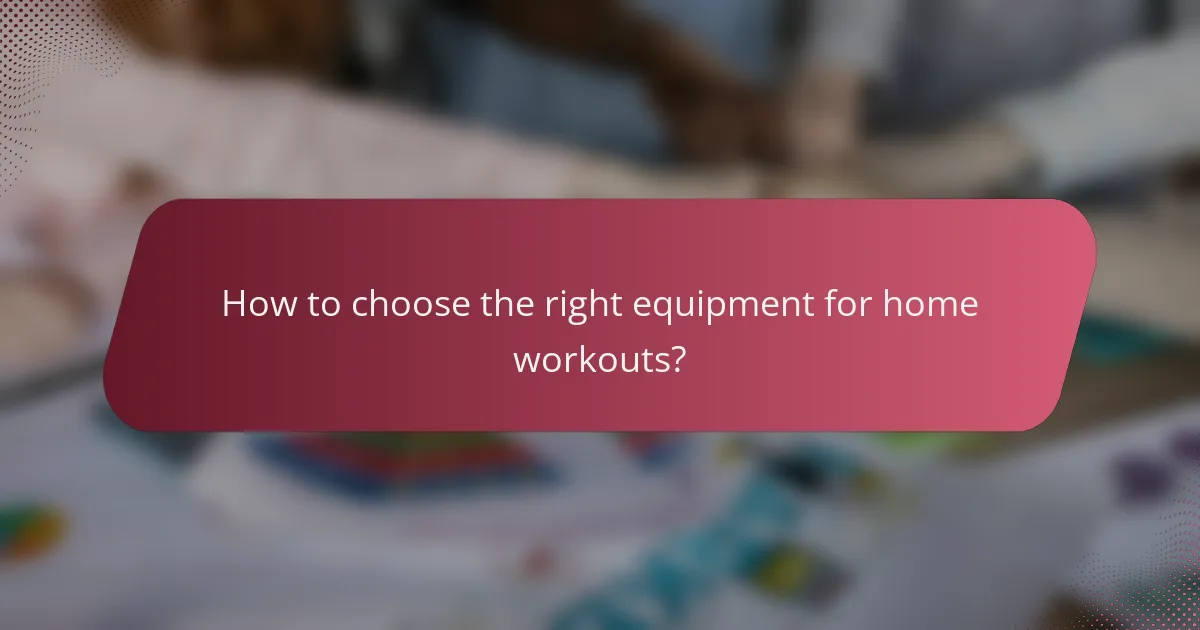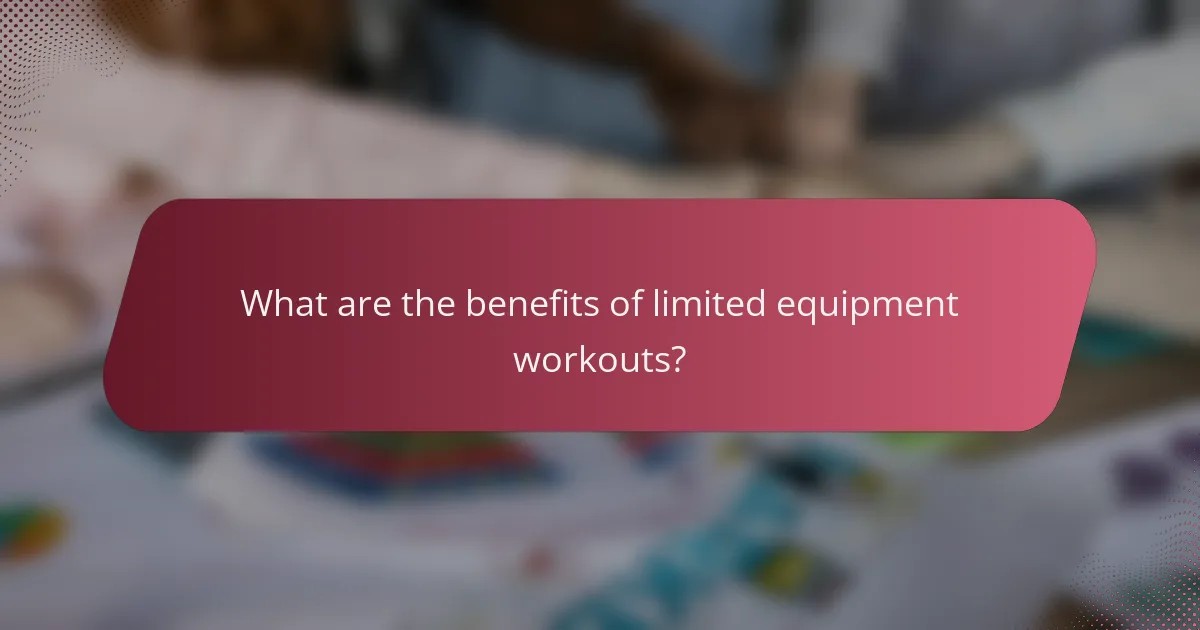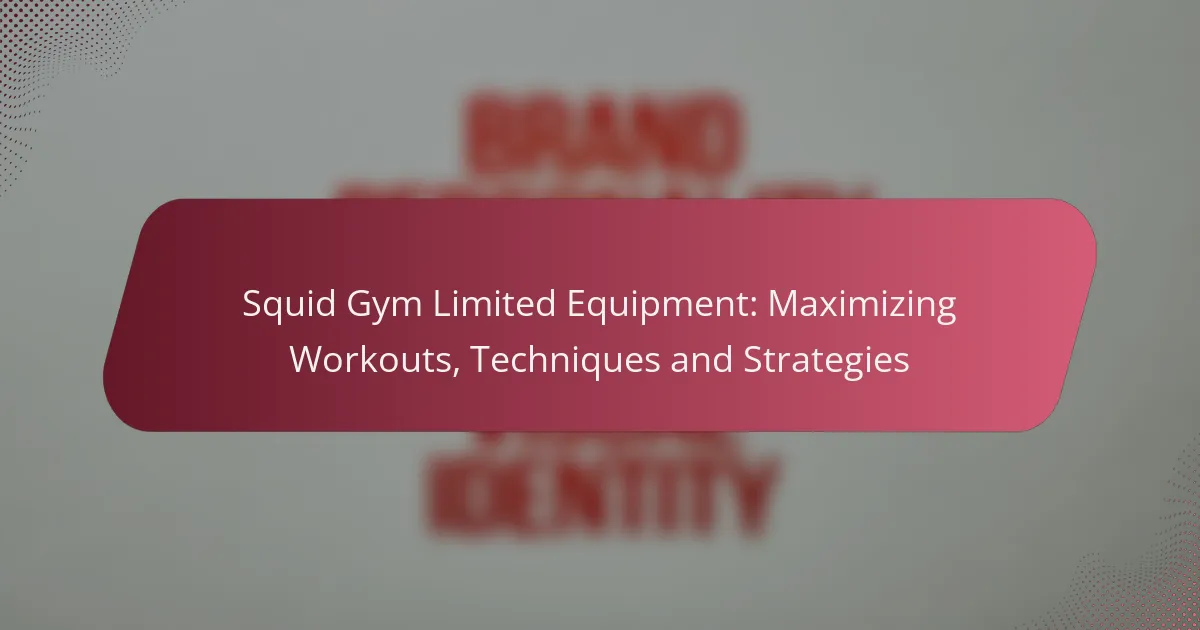Squid Gym equipment is expertly crafted to optimize workouts in limited spaces, offering versatile training options that cater to various fitness levels. By utilizing techniques such as High-Intensity Interval Training (HIIT) and circuit training, users can maximize their workout efficiency, achieving significant results even in shorter time frames. Incorporating clear goal-setting and progress tracking further enhances performance and motivation, making every session count.

How can Squid Gym equipment maximize workouts?
Squid Gym equipment is designed to enhance workouts by providing versatile and efficient training options, especially in limited spaces. Its compact design and multifunctional capabilities allow users to perform a wide range of exercises without the need for extensive gear.
Compact design for small spaces
The compact design of Squid Gym equipment makes it ideal for home gyms or small workout areas. With dimensions that fit easily in tight spaces, users can maximize their training without sacrificing room for other activities.
Consider using wall-mounted or foldable equipment that can be stored away when not in use. This approach not only saves space but also encourages regular workouts by keeping the environment organized and accessible.
Versatile exercises with limited gear
Squid Gym equipment allows for a variety of exercises using minimal gear, making it suitable for diverse fitness levels. Users can perform strength training, cardio, and flexibility exercises with just a few pieces of equipment.
For example, resistance bands can be used for strength training, while a compact stability ball can enhance core workouts. This versatility enables users to create comprehensive workout routines without needing a full gym setup.
Effective bodyweight training techniques
Bodyweight training techniques are highly effective and can be easily integrated with Squid Gym equipment. Exercises like push-ups, squats, and planks can be performed anywhere and require no additional gear.
Incorporate variations such as elevated push-ups using a stability ball or resistance band-assisted squats to increase intensity. These techniques not only build strength but also improve balance and coordination, making them essential for a well-rounded fitness regimen.

What techniques enhance workout efficiency?
To enhance workout efficiency, incorporating techniques like High-Intensity Interval Training (HIIT) and superset or circuit training can significantly boost results. These methods focus on maximizing effort in shorter durations, allowing for effective workouts even with limited time.
High-Intensity Interval Training (HIIT)
HIIT involves alternating between short bursts of intense exercise and periods of rest or lower-intensity activity. This approach can elevate heart rate and improve cardiovascular fitness in a fraction of the time compared to traditional workouts. For example, a typical HIIT session might last 20-30 minutes, combining exercises like sprinting, cycling, or bodyweight movements.
When implementing HIIT, aim for a work-to-rest ratio of 1:1 or 2:1, such as 30 seconds of sprinting followed by 30-60 seconds of walking. Be cautious of overtraining; start with 1-2 sessions per week and gradually increase as your fitness improves.
Superset and circuit training methods
Superset training involves performing two exercises back-to-back with little to no rest in between, targeting either the same muscle group or opposing muscle groups. This method can save time and increase workout intensity. For instance, pairing bench presses with bent-over rows allows for muscle engagement while one muscle group rests.
Circuit training, on the other hand, consists of a series of exercises performed in sequence with minimal rest. This can be particularly effective for full-body workouts, combining strength and cardio elements. A typical circuit might include 5-10 exercises, such as push-ups, squats, and jumping jacks, completed in a single session lasting 30-45 minutes. To maximize benefits, keep rest periods short, around 15-30 seconds between exercises.

Which strategies improve workout outcomes?
Effective strategies for improving workout outcomes include setting clear goals, tracking progress, and ensuring proper rest and recovery. These elements work together to enhance performance, prevent injuries, and maintain motivation.
Goal setting and tracking progress
Setting specific, measurable, achievable, relevant, and time-bound (SMART) goals is crucial for maximizing workout outcomes. For example, instead of aiming to “get stronger,” a more effective goal would be to “increase bench press weight by 10% in three months.” This clarity helps maintain focus and motivation.
Tracking progress can be done through various methods, such as workout logs, apps, or fitness trackers. Regularly reviewing your achievements not only highlights improvements but also identifies areas needing adjustment. Aim to assess your progress weekly or monthly to stay on track.
Incorporating rest and recovery
Rest and recovery are essential components of any workout regimen, as they allow the body to repair and grow stronger. Incorporating at least one or two rest days per week can prevent overtraining and reduce the risk of injury. Active recovery, such as light stretching or walking, can also be beneficial.
Consider implementing recovery techniques like foam rolling, hydration, and adequate sleep. Aim for 7-9 hours of quality sleep each night to support muscle recovery and overall health. Listening to your body and adjusting your workout intensity based on how you feel can lead to better long-term results.

What are the best practices for using limited equipment?
To maximize workouts with limited equipment, focus on efficiency and versatility. Prioritize exercises that engage multiple muscle groups and incorporate bodyweight movements to enhance strength and endurance.
Proper warm-up and cool-down routines
Effective warm-up and cool-down routines are essential for preventing injuries and improving performance. A warm-up should last around 5-10 minutes and include dynamic stretches and movements that mimic the exercises you plan to perform.
For cool-down, spend another 5-10 minutes on static stretching to help muscles recover and reduce soreness. Incorporate stretches for major muscle groups, holding each for about 15-30 seconds.
Form and technique focus
When using limited equipment, maintaining proper form and technique is crucial to prevent injuries and maximize effectiveness. Concentrate on executing each movement correctly, even if it means reducing the weight or intensity.
Utilize mirrors or record your workouts to analyze your form. Consider seeking feedback from knowledgeable peers or trainers to ensure you are performing exercises correctly and safely.

How to choose the right equipment for home workouts?
Choosing the right equipment for home workouts involves evaluating your available space and budget, as well as selecting versatile tools that can accommodate various exercises. Focus on items that fit your fitness goals while maximizing your workout efficiency.
Assessing space and budget
Start by measuring the area where you plan to work out. Ensure you have enough room for movement and equipment without feeling cramped. A space of at least 10 square meters is often recommended for a comfortable workout environment.
Next, set a realistic budget. Home gym equipment can range from affordable options like resistance bands and dumbbells to more expensive machines like treadmills or stationary bikes. Aim to allocate a budget that allows for quality items without overspending.
Prioritizing multifunctional tools
When selecting equipment, prioritize multifunctional tools that can serve multiple purposes. For instance, a set of adjustable dumbbells can replace several fixed-weight options, saving both space and money.
Consider items like a stability ball, which can be used for strength training, flexibility exercises, and core workouts. Resistance bands are also versatile, allowing for a variety of strength exercises while being easy to store. Aim for tools that can adapt to different workout styles to keep your routine fresh and engaging.

What are the benefits of limited equipment workouts?
Limited equipment workouts offer several advantages, including cost savings and increased accessibility for beginners. These workouts can be highly effective, allowing individuals to maximize their fitness routines without the need for extensive gym gear.
Cost-effectiveness
One of the primary benefits of limited equipment workouts is their cost-effectiveness. Investing in a few essential items, such as resistance bands, dumbbells, or a yoga mat, can significantly reduce expenses compared to purchasing a full gym setup. This approach allows individuals to achieve their fitness goals without breaking the bank.
Additionally, many effective workouts can be performed using body weight alone, eliminating the need for any equipment. This means that even those on a tight budget can engage in regular exercise and maintain their health.
Accessibility for beginners
Limited equipment workouts are particularly accessible for beginners who may feel intimidated by traditional gym environments. With fewer tools to manage, newcomers can focus on mastering basic movements and building confidence in their abilities. Simple exercises like push-ups, squats, and lunges can be performed anywhere, making it easier to start a fitness journey.
Moreover, limited equipment allows for a more straightforward learning curve. Beginners can gradually increase the intensity of their workouts as they become more comfortable, ensuring a sustainable and enjoyable fitness experience.
